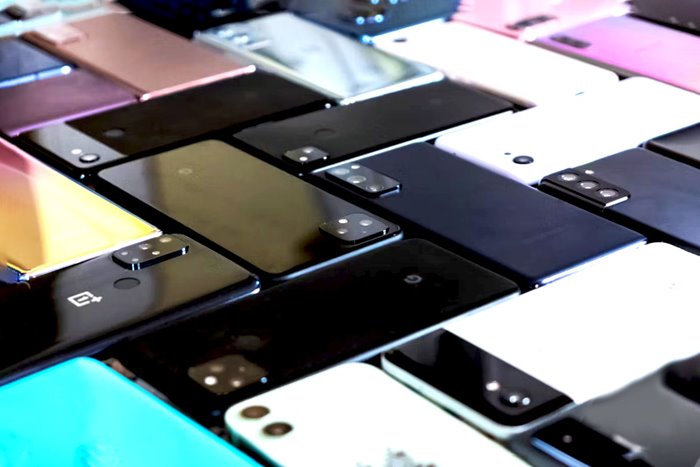Why have glass and plastic plagued Android phones? What is the reason for not using higher quality materials?
While Today It Is Possible To Produce Phones With Various Materials Such As Titanium, Cobalt, And Sapphire, And Apple Uses Stainless Steel In The iPhone, What Is The Reason For Continuing To Produce Android Phones With Glass, Plastic, And Aluminum?
Glass and plastic plagued Android phones; one of the desirable features of the iPhone in recent years has been the use of a stainless steel body; Android phones end up using materials like aluminum or glass. This is even though many high-quality, resistant, and premium materials can be easily used in constructing the phone body.
Indeed, why do almost all Android smartphones use unattractive materials such as plastic, glass, and aluminum? The android police website has talked to Kinder Liu, the CEO and head of research and development at OnePlus, to investigate this question.
Since OnePlus has used a more comprehensive range of materials to construct its products, it has more experience in this field. During its less than ten years of activity, this company has produced products made of plastic, glass, aluminum, fiberglass, wood, ceramic, cobalt, and ruby, and this factor has given them a more comprehensive insight into the advantages and disadvantages of using premium materials to make everything in Do not summarize the total price. Interestingly, some mentioned premium and expensive materials have advantages and disadvantages.
Why don’t we have a steel Android phone?
We start our review with steel and why it is not used in Androids. There’s a good reason not to use steel on flagship Android phones, and it’s not all about price. Neither OnePlus nor Samsung is strangers to increasing the cost of their manufactured products, and according to Liu, there is another reason why Android phones are not made of steel, and that is weight. This is not a problem that can be solved easily; Because there are essential differences in platform and customer expectations.
Android phones have bigger batteries; Larger batteries weigh more.
For several reasons, iPhone phones have smaller batteries than their Android competitors. Still, in short, Apple has more control over the software and hardware of its products and imposes more restrictions on the activity of applications, among which it can mention the prevention of applications in the background; Therefore, iPhones require less power, and this is the experience that iPhone 11 Pro Max and 12 Pro Max users will experience. They acknowledge it. Many users believe it can last for hours and days with just one charge! You can use giant iPhone flagships. This is while the battery capacity of the iPhone 12 Pro Max is only 3678 mAh, which is an ordinary and even insignificant capacity compared to the battery of its Android counterparts. The battery capacity of most Android flagship phones is much higher, and nowadays, it reaches 4500 mAh on average.
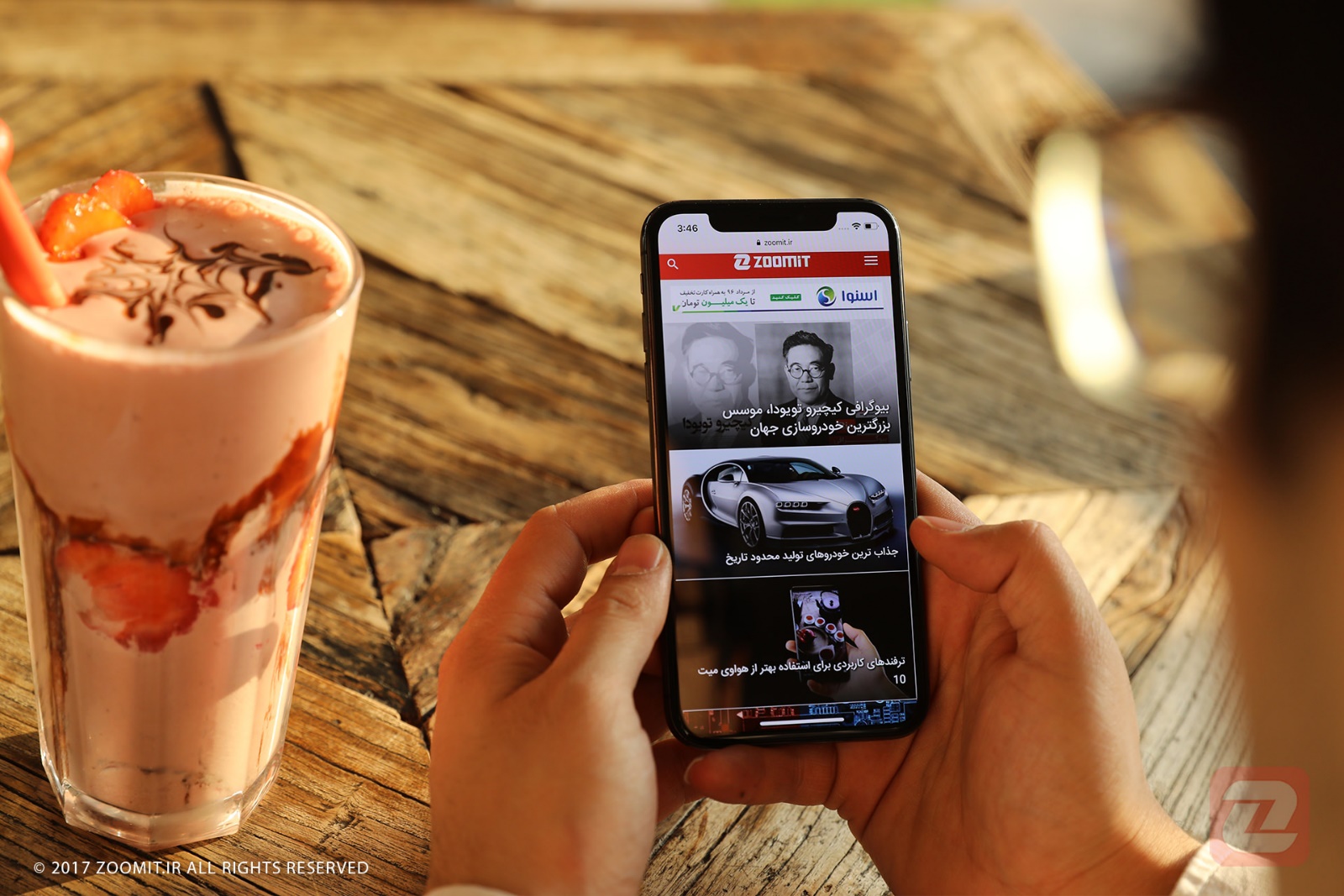 iPhone 4 was Apple’s first steel phone, But all the Pro models from iPhone X and newer come with steel
iPhone 4 was Apple’s first steel phone, But all the Pro models from iPhone X and newer come with steel
Due to the differences in software and hardware, Android phones require larger batteries, which are heavy parts. Stainless steel weighs much more than aluminum, making this problem more complicated.
The iPhone 12 Pro Max is about 228 grams, a significant weight, and even considered heavy for some. Android phone manufacturers prefer to use larger batteries with longer life, which in large flagship models reach a weight of about 200 grams.
Liu says that the use of steel in OnePlus products has been investigated before. Still, after considering many factors, the aluminum alloy was finally used in OnePlus 9, which has less weight and thickness.
What happened to sapphire screens?
Using different samples of Gorilla Glass and Victus Glass is the gold standard of today’s phones, which has been common in the last decade. Still, it would be best if you did not consider it the most resistant material available. One feature that even Apple hasn’t used yet is the ruby display.
For a long time, Sapphire or Sapphire has been used in expensive watches to strengthen their screen as much as possible, and recently it has become common in some parts of smartphones, such as the camera lens cover. Still, there are questions about their purity and use of phones. Sapphire is very resistant and shows excellent resistance to scratches. However, contrary to expectations, except for lesser-known products like Kyocera, Sapphire has not been very popular in the smartphone world.
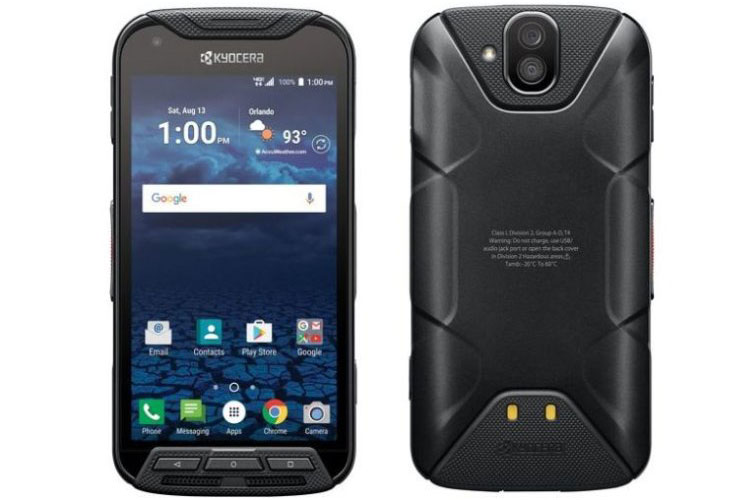
Kyocera has made several smartphones with a sapphire screen
According to the head of the research and development department of OnePlus, this has several reasons, one of which is the price:
Sapphire coverage is not only limited in today’s industry, but it is also costly, especially for large screens with impressive surfaces. Therefore, sapphire displays are suitable for smaller devices such as watches and camera lenses.
The mentioned problem goes back to how Sapphire is produced; Sapphire is not mined from the ground in the form of a smartphone screen without defects and distortions; Rather, it must be made.
Any product with such a complex manufacturing process will have an exorbitant price.
Industrial Sapphire is produced in the laboratory under harsh conditions from aluminum oxide and has a slow manufacturing process. First, the ingredients are melted at extremely high temperatures, and a piece of the sapphire crystal is used to stimulate the formation of Sapphire. Then, Sapphire is created around it at a prolonged rate. This may seem easy, But minor temperature changes can affect the formation speed or even spoil the final product. Finally, a mass of Sapphire, called a boule, is formed, the dimensions of which are difficult to predict, making it very difficult to mine a layer the size of a smartphone screen.
The production of any product with such a complex process will mean an exorbitant price, and currently, using Sapphire in smartphones is not cost-effective. However, price is not the only reason Sapphire is not used in phones.
Sapphire also has two other disadvantages: firstly, it is slightly darker than glass, which is very important when used outdoors and requires more light. According to Liu, the light transmission coefficient of Sapphire is about 88%, and that of glass is 92%, which is a significant number despite the slight difference. Also, Sapphire is weaker than Gorilla Glass in some ways:
Also, although sapphire crystal is tough and scratch resistant, it is relatively fragile and sensitive to impact on the screen. For this reason, the phone industry is currently more inclined to use glass in the display of smartphones.
Maybe Sapphire is harder, But the possibility of breaking the Gorilla Glass when the phone falls is less. Scratch or broken screen? Which is more important?
Why is the role of ceramic and titanium pale?
While Essential has made the PH-1 out of ceramic and titanium, these materials are not very common in the smartphone industry. Only occasionally does a particular phone model come out with ceramic parts. This was also seen in the OnePlus X phone and the Mi 11 Ultra phone, also recently used ceramic materials on the back, But the mentioned article can be used beyond these.
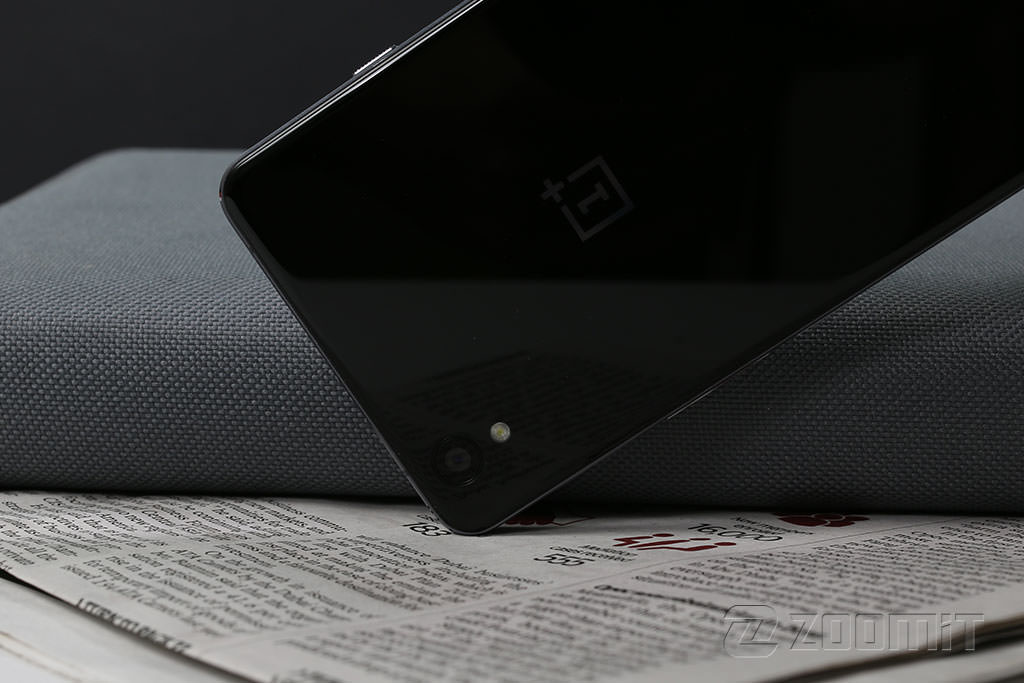 OnePlus X had a ceramic model.
OnePlus X had a ceramic model.
Although the term ceramic is not very precise and refers to different materials, several advantages have been mentioned. While the companies are reluctant to reveal the details of the ceramic composition, Liu says that phones like the OnePlus X that use a ceramic body have a higher degree of hardness than glass. Despite this, the advantages of ceramic go beyond a more beautiful appearance and a more resistant material. This material has a smoother, more polished texture and brighter, more attractive reflections.
Ceramic phones are gone.
However, ceramics have many limitations. Using glass and metal, phones can be produced in almost any color. Still, according to Liu, smooth and polished ceramics can be made in two colors, white and black, and their usable visual effects are not as sound as glass. Here’s something that can be confirmed in retrospect: ceramic phones usually had duller colors. Perhaps the only exception is the Essential PH-1 phone with ocean blue color, which has a stunning blue ceramic body with the help of copper metal.
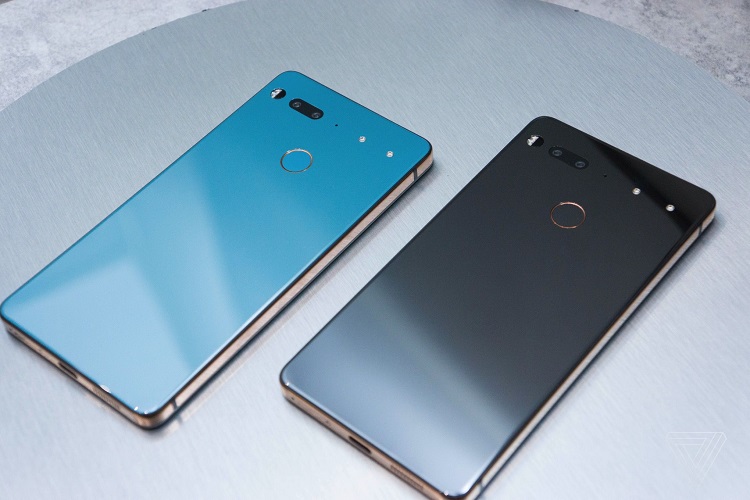
Essential PH-1 phone in ocean blue and moonlight black
OnePlus plans to find new ways to use ceramic in its phones, and the said material is not unfamiliar to smartphones, and you can find products of this kind in the market, although they are not very many at the moment.
Also, titanium is more expensive than aluminum, just like the other items we will examine in this article. But the reason for not using it is not only the price; Due to this material’s high resistance and durability, it is tough to work with it.
However, the situation is a little different now. The laser-sintered method can be made in precise dimensions and does not have the hardness of molten titanium and molding, But it still needs payment. According to one expert, laser curing titanium is more complicated than aluminum and steel. It has more complex geometric parts, But due to the higher cost, it is impossible to use it in mass in different products. Liu says that the time required to process titanium is two to three times that of aluminum alloy, which means an increase in the final price.
Is it possible to use cobalt?
Durable and resistant materials are not limited to titanium, ceramic, and steel. Certain metals, such as cobalt-based alloys, also have a high degree of hardness and strength and are resistant to corrosion and wear, which can be seen in some expensive watches. OnePlus has also released a particular model of its new smartwatch called the OnePlus Watch with a cobalt body, and Liu can have something to say in this regard.
Currently, most manufacturers have little experience in cobalt alloy manufacturing. Cobalt has excellent resistance and hardness characteristics and is an ideal material for the OnePlus Watch, but making it is a bit difficult. The tools used to produce cobalt alloy have a shorter life than steel. Also, applying processes such as polishing on cobalt alloy is more complex and time-consuming than steel. In short, to use this material in smartphones, several things should be considered.
Like titanium and all very resistant metals, the more complex the material, the more powerful tools it needs to form. The deterioration of this issue is more about cobalt; Because not only the tools that make it have a shorter life; Rather, fewer producers have the experience of producing it.
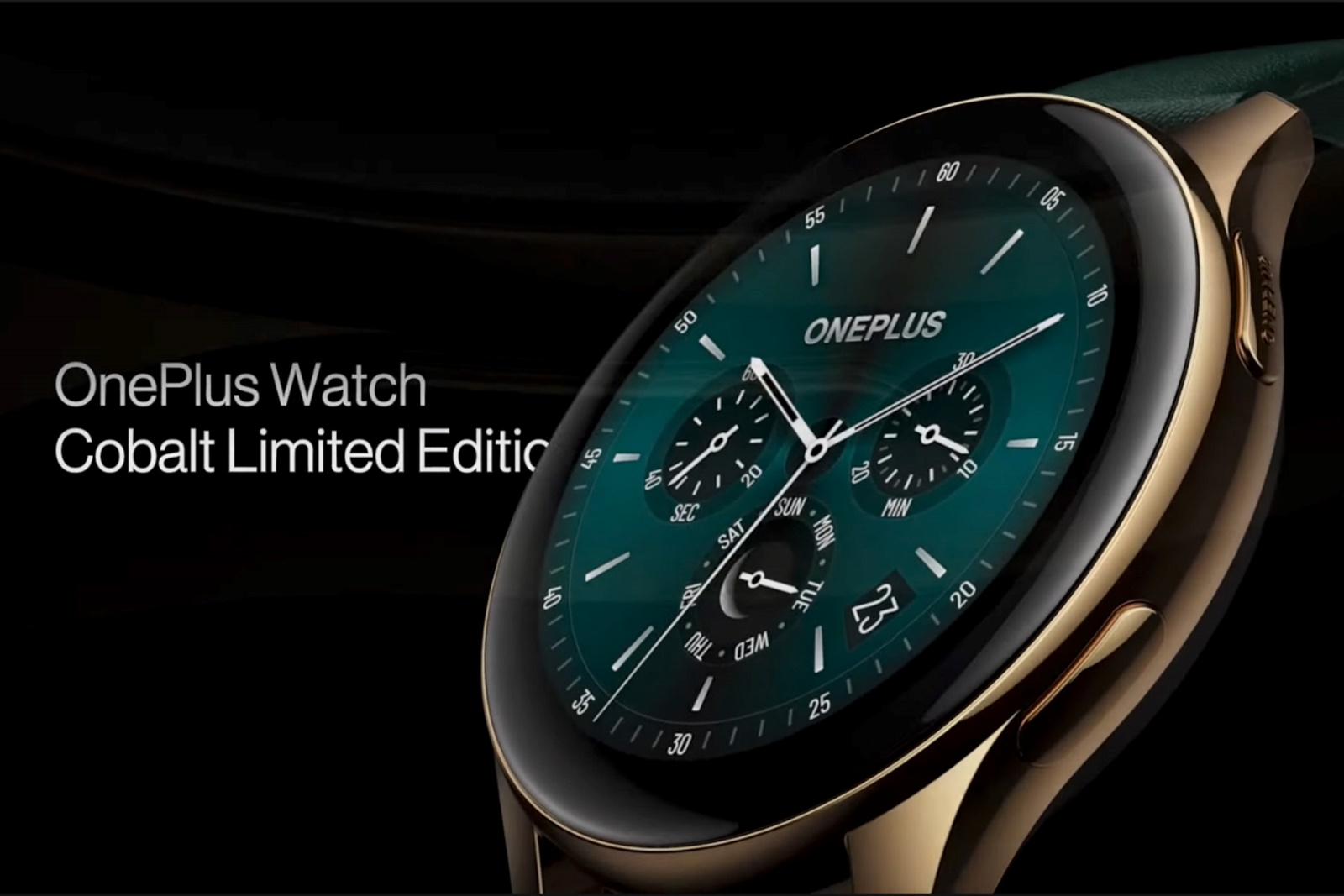
OnePlus watch the Cobalt version
Of course, if OnePlus has been able to make a watch made of cobalt, it can make a phone as well; But it is unlikely that you have the knowledge and patience to read its price tag!
What about wood and leather?
Except for exceptional cases such as the Moto X models of 2014 and 2015 and the chance for the OnePlus One, sold separately, using materials such as wood and leather in smartphones is not very common. This is even though natural materials are consistently considered among the premium and expensive goods. Previously, companies such as Oppo, Huawei, and Xiaomi have used vegetable leather in their phones, which is not very similar to natural leather; But why did wood and genuine leather disappear from smartphones after Moto Maker closed down?
Why should a natural material that is highly vulnerable be used in the phone?
Natural materials have disadvantages during production and are less durable than materials such as aluminum. Unlike materials such as titanium or cobalt, making phone parts with these natural materials is not difficult due to their lower resistance; But this is problematic. riding to OnePlus:
Over the past eight years, we have worked with various natural materials, such as wood, bamboo, and leather, to make smartphones and accessories. Working with these materials is not technically challenging. Still, our experience shows that materials like glass and metal provide more exciting textures and richer visual effects and are also more durable, especially for professional and ultra-professional devices. For example, maybe synthetic leather is more durable than natural leather; But we have to consider many other factors that affect the user experience.
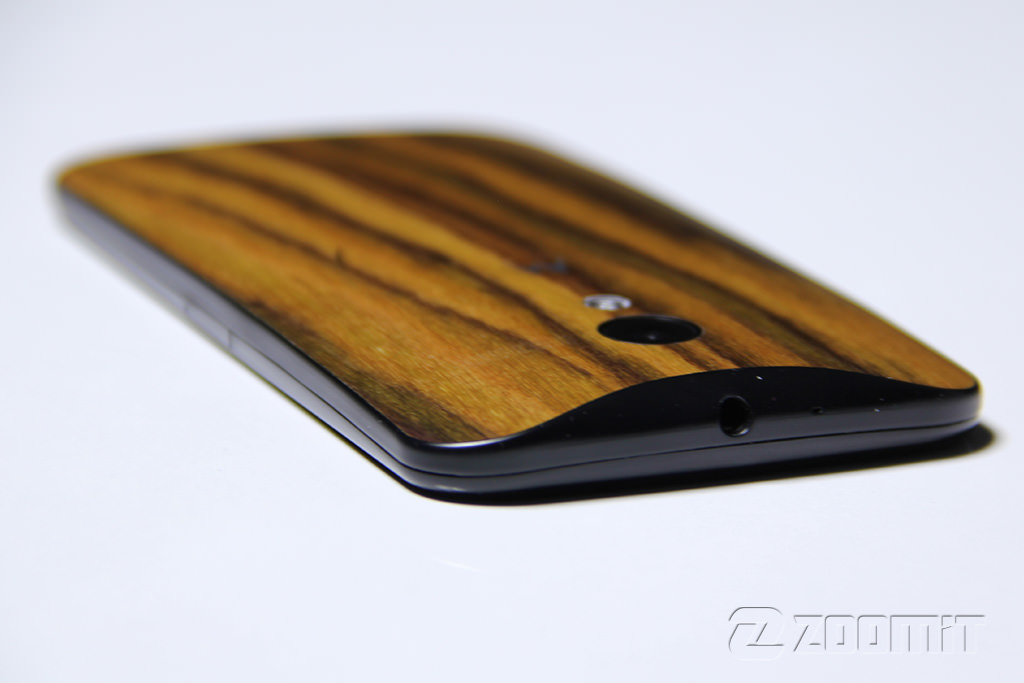
Motorola Moto X 2013 phone with wooden body
More importantly, why build a phone with weaker natural materials that quickly wear, scratch, and break? Most of us use cases and covers for our phones, which are easily replaced. In particular, replaceable protective coverings are used when possible. Therefore, using wooden and leather side frames available in the market, the feeling of natural materials can be easily conveyed to the user.
It’s not just about money; But it is an essential factor
Finally, it should be said that although the widespread use of aluminum and glass is not only due to their cost, the price is one of the critical factors. Liu believes:
Actual structural plans and industrial designs usually determine the final cost, and materials are only one factor. The use of said materials will be more expensive due to increased hardness and processing time. It is difficult to say how much the actual difference in numbers will be.
Also, there are engineering problems and other hidden disadvantages to even the most durable materials. Still, aluminum and glass are known quantities that are easy to work with and are good and strong enough for the average consumer. According to Liu:
Current materials have industrial requirements and prerequisites and can be used for many applications.
If other materials mentioned above are used, the life of some parts may be increased; But overall, the device will not improve significantly. Improvements are most apparent when they are seen in texture and appearance. For example, although stainless steel has a high degree of hardness, an aluminum alloy mid-frame is also rugged enough. If we use Sapphire, the phone screen is more resistant to scratches and wear; But it is vulnerable to impact and fall. For OnePlus products, we consider factors like user demand and experience before choosing the suitable m like or making smartphones.
Unfotunately, this means that OnePlus has no plans to produce a steel smartphone.
In the world of Android phones, with few exceptions, there are only two options: glass and plastic or glass and aluminum, which is usually influenced by price; But the lower price is not the only important factor, and things like battery life and engineering problems also have an effect, which has made plastic, glass and aluminum the king in the world of Androids.
